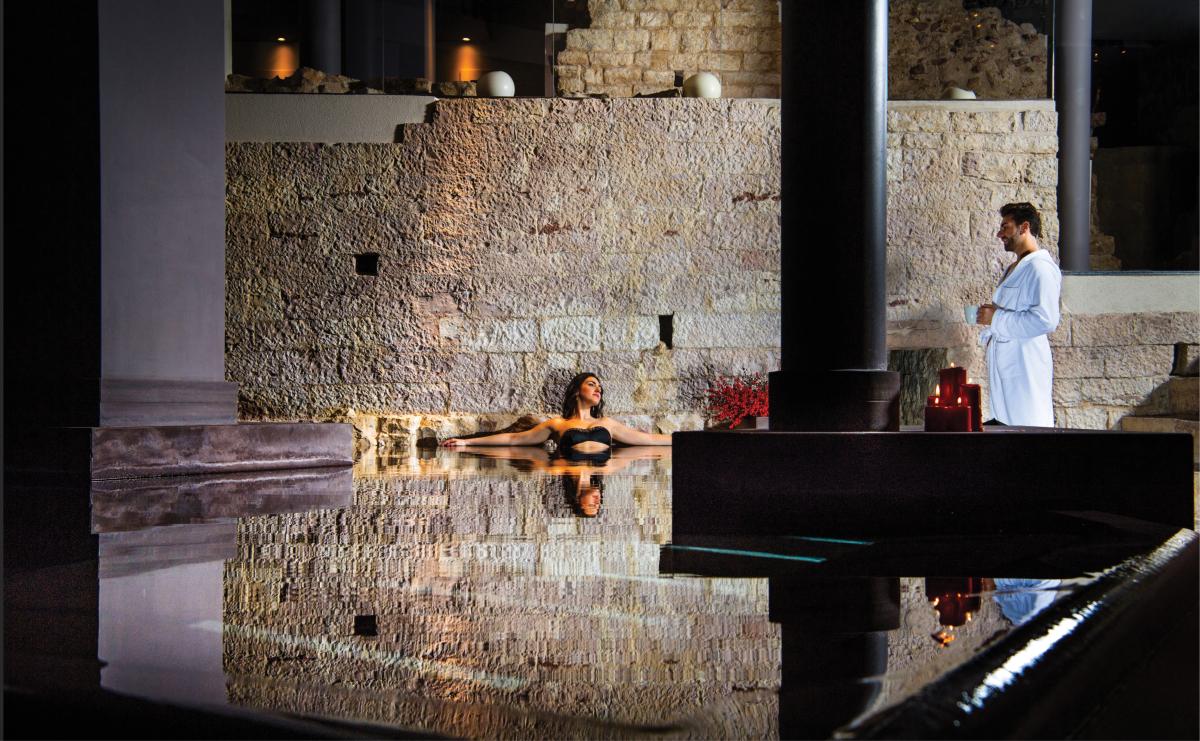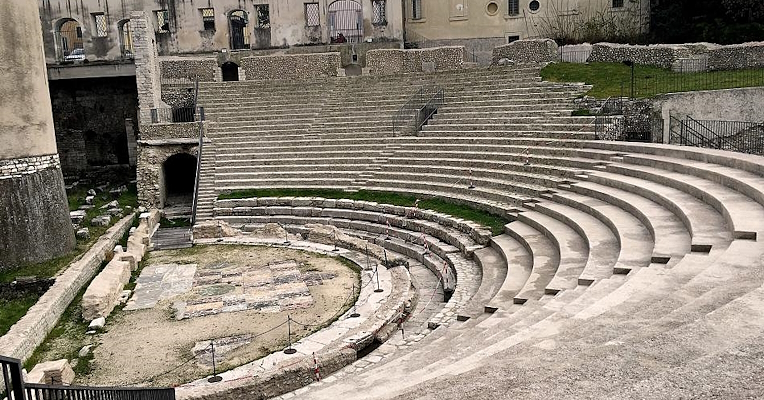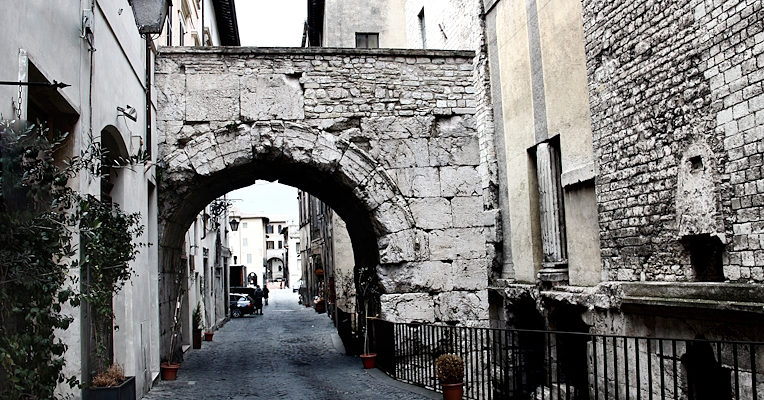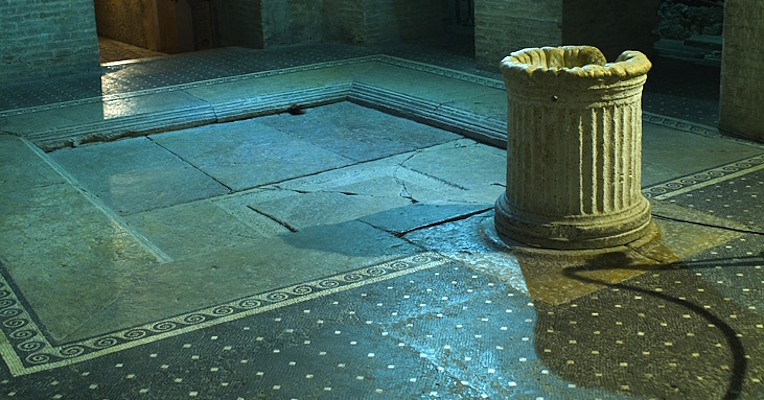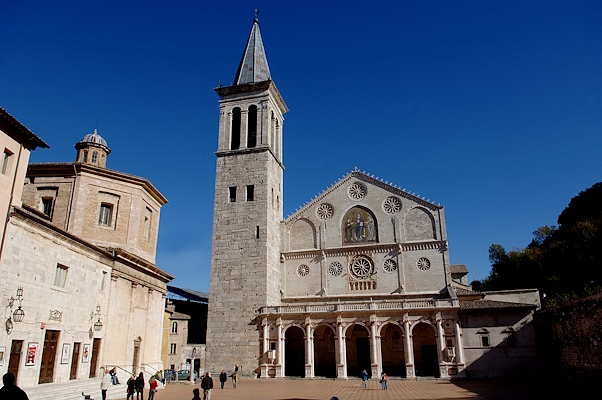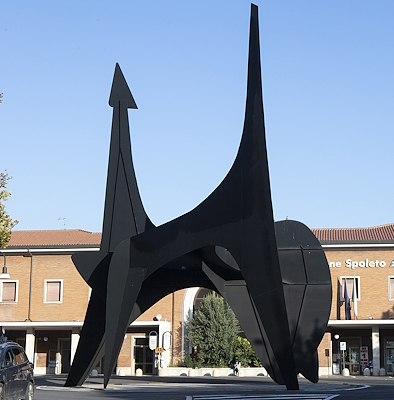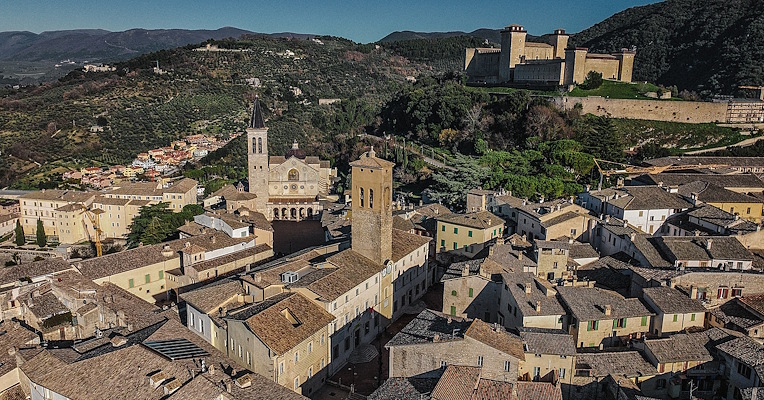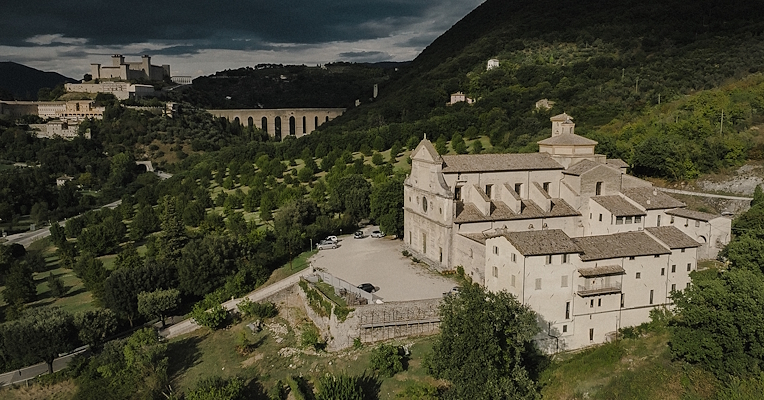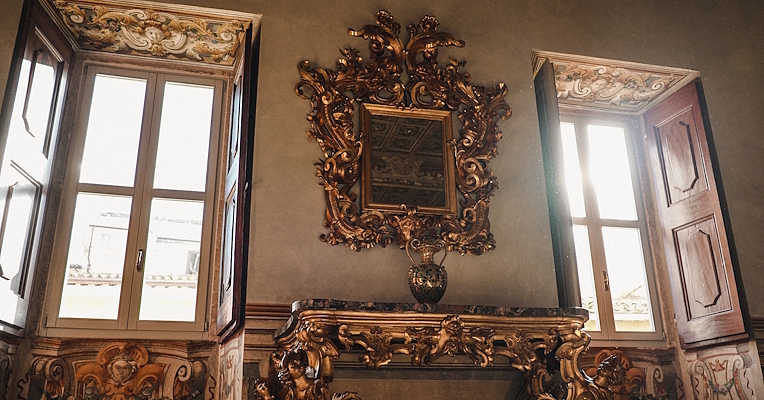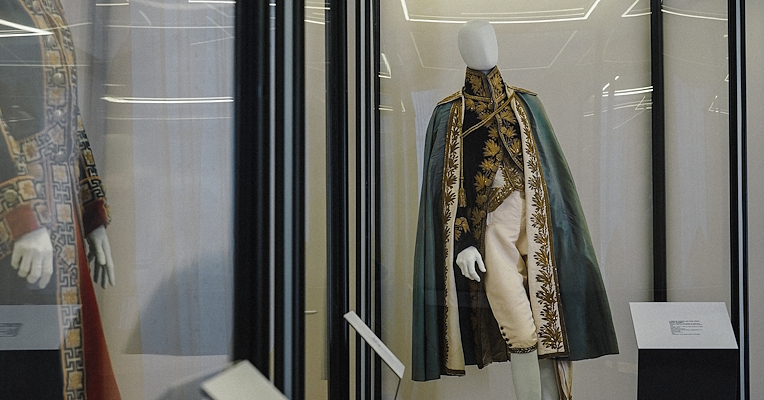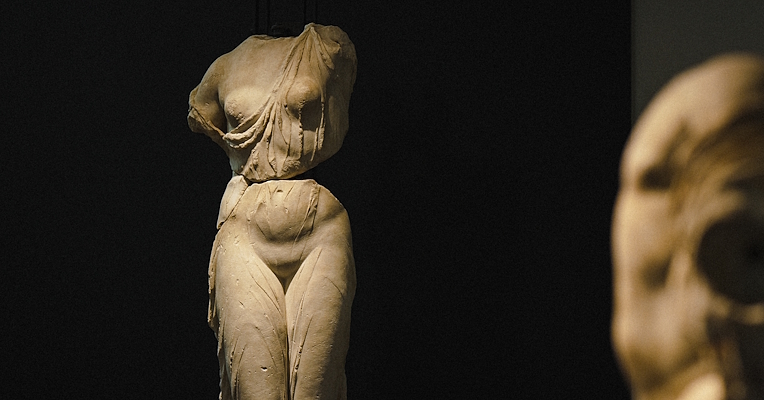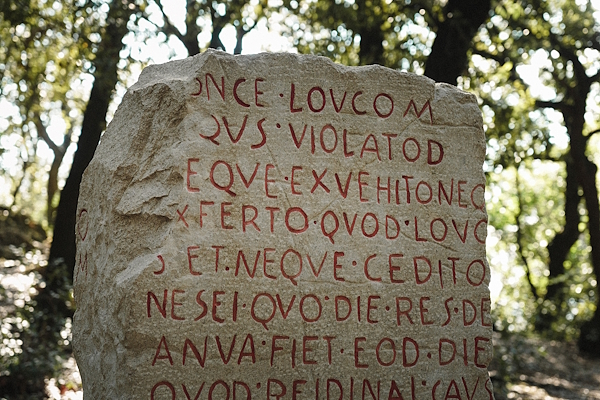Si infatuarono di Spoleto “turisti” d’eccezione come Michelangelo Buonarroti, Giosuè Carducci, Gabriele D’Annunzio e pittori come William Turner e Johan Ludvig Lund che immortalarono la città nei loro taccuini. La città è oggi un perfetto equilibrio di arte, bellezza, storia ed eventi.
La storia di Spoleto
L’insediamento di Spoleto è stato determinato dalla sua conformazione geomorfologica, caratterizzata da abbondanti sorgenti e una posizione strategica su un colle facilmente difendibile. La sua storia è un susseguirsi di epoche e dominazioni che hanno lasciato un’eredità artistica e culturale senza pari.
Frequentata sin dal Neolitico, divenne un importante centro degli Umbri durante l’Età del Ferro, la trasformarono in un centro fiorente, con una struttura sociale dominata da un’aristocrazia di principi e principesse, come testimoniano alcune necropoli del territorio, come quella di Piazza d’Armi.
Nel 241 a.C., i Romani la rendono una colonia con il nome di Spoletium, favorita dalla vicinanza alla via Flaminia. Fortificata e arricchita da imponenti opere pubbliche, la città entra nelle cronache storiche nel 217 a.C. quando respinge l’avanzata di Annibale dopo la Battaglia del Trasimeno. Durante l’Impero, vengono realizzati monumenti spettacolari come l’Arco di Druso e Germanico e la raffinata Casa Romana.
Con l’arrivo del Cristianesimo, Spoleto diventa un centro religioso di rilievo, teatro di martiri e vescovi influenti. Ma è con l’invasione longobarda che la città assume un nuovo ruolo politico: nel 570 diventa capitale del Ducato di Spoleto, dominando l’Italia centrale fino all’arrivo di Carlo Magno e all’inserimento nel Sacro Romano Impero.
Nel Medioevo, la città è contesa da imperatori e papi. Federico Barbarossa la conquista e distrugge nel 1155, ma nel 1198 entra definitivamente nello Stato Pontificio. Il simbolo del potere papale resta la Rocca Albornoziana, eretta nel XIV secolo.
Cosa vedere
Il centro storico e le tracce romane
Il cuore di Spoleto è un affascinante labirinto di vicoli medievali, nei quali è possibile scoprire numerose testimonianze di epoca romana.
- Arco di Druso e Germanico: imponente arco romano che introduceva all’antico foro, l’attuale Piazza del Mercato.
- Resti del foro romano: nei pressi dell’Arco di Druso e di Germanico, si possono ammirare alcuni resti del foro romano, tra i quali un tempio di dedica ignota, trasformato nella cripta di Sant’Isacco, posta sotto la chiesa di Sant’Ansano.
- Teatro Romano: risalente al I secolo a.C., è stato riportato alla luce tra il 1954 e il 1960. Ospita ancora oggi spettacoli ed è parte del Museo Archeologico Nazionale di Spoleto, che raccoglie reperti dall’età del bronzo all’epoca romana.
- Casa Romana: elegante dimora di I secolo d.C. scoperta nel 1885, che conserva l’atrio ed eleganti pavimenti musivi. La domus, sorta nei pressi del foro romano, apparteneva a un personaggio di alto rango, identificato grazie a un’iscrizione nella madre dell’imperatore Vespasiano.
- Anfiteatro Romano: risalente al II secolo d.C., parzialmente visibile e incorporato nel tessuto urbano. Fu utilizzato per spettacoli e giochi gladiatori.
- Ponte Sanguinario: il ponte romano a tre arcate in travertino, costruito nel I secolo a.C., per consentire all‘antica via Flaminia un passaggio sicuro sopra il torrente Tessino. Il nome, forse derivato dalla corruzione del nome della porta sandapilaria dell’anfiteatro, ha alimentato la leggenda che qui siano avvenute numerose decapitazioni di martiri, tra cui quella di san Ponziano.
I Luoghi Longobardi del Ducato di Spoleto
- Mosaici di Palazzo Mauri: il Palazzo, sede della Biblioteca Comunale, conserva un interessante mosaico di VI secolo, che dimostra come l’area forense della città continuò a vivere anche dopo la caduta dell’Impero Romano, trasformandosi nella sede delle aristocrazie longobarde.
- Basilica di San Salvatore: patrimonio UNESCO, è un esempio unico di architettura longobarda, con influenze bizantine e classiche. La sua facciata e gli interni sono un vero trionfo di eleganza e maestria.
- Chiesa e Monastero di San Ponziano: sorta nelle vicinanze della Basilica di San Salvatore, è anch’essa di probabile fondazione longobarda. Edificata su un’area cimiteriale paleocristiana, nella cripta si conservano numerosi sarcofagi di martiri, tra cui san Ponziano, decapitato nel 175. Il monastero fu costruito intorno all’anno 1000, mentre la chiesa, del XII secolo, conserva una pregevole facciata romanica.
- San Paolo inter vineas: chiesa del X secolo con affreschi del Duecento, un gioiello poco conosciuto ma di grande interesse e fascino. Le sue origini risalgono tuttavia al VI secolo: Gregorio Magno dà notizia che nel 593 una vescovo longobardo, seguace di Ario, che perse la vista entrando nella chiesa.
I capolavori medievali e rinascimentali
Chiese e monumenti, raccontano secoli di arte e devozione:
- Duomo di Santa Maria Assunta: un gioiello romanico con un mosaico che ricorda l’arte bizantina sulla facciata. All’interno, si possono ammirare gli affreschi di Filippo Lippi, il busto in bronzo di Urbano VIII del Bernini e la Croce dipinta di Alberto Sotio, una delle opere più significative del XII secolo.
- Chiesa di sant’Eufemia: sorta nel X secolo sul luogo della residenza dei duchi longobardi, fu restaurata dalla la badessa Gunderada fondò un monastero di benedettine. Si accede dal Museo Diocesano per ammirare un interno atre navate, sulle laterali svettano degli insoliti matronei
- Chiesa di san Gregorio Maggiore: edificio costruito nel 1079 e consacrato nel 1146, in onore del martire spoletino Gregorio, le cui spoglie e quelle di numerosi martiri furono raccolte dalla vedova Abbondanza, che diede origine a un’area cimiteriale e una chiesa paleocristiana.
- Chiesa di San Pietro: nota per la sua facciata romanica ricca di bassorilievi che raccontano storie medievali, tra cui scene della vita di San Pietro e allegorie moraleggianti.
La Rocca Albornoziana e il Ponte delle Torri
Posta in posizione dominante sulla città, la Rocca Albornoziana è una fortezza medievale che offre una vista mozzafiato sulla valle. Costruita nel XIV secolo per volere del cardinale Albornoz, è un simbolo del potere papale e oggi ospita il Museo del Ducato oltre a mostre e eventi culturali. Il Ponte delle Torri che collega la città al bosco sacro di Monteluco, è un acquedotto medievale alto 80 metri, perfetto per una passeggiata panoramica che regala vedute indimenticabili sulla città e sulla vallata.
Arte contemporanea
Spoleto è anche arte e cultura contemporanea.
- Tra le opere più celebri spicca il Teodelapio, la maestosa scultura in ferro di AlexanderCalder, alta 18 metri, divenuta un simbolo della città. Realizzata nel 1962 per il Festival dei Due Mondi, è una delle prime installazione fisse di arte contemporanea di grandi dimensioni in Europa. Il nome dell’opera si ispira al duca longobardo Teodelapio, figlio e successore del fondatore del ducato Faroaldo, creando un legame tra la modernità dell’opera e la storia della città.
- Palazzo Collicola ospita il Museo Palazzo Collicola Arti Visive - Carandente, con opere di artisti di fama internazionale come Pino Pascali, Sol LeWitt e Leoncillo Leonardi. La collezione, nata dal Premio Spoleto, offre un interessante percorso attraverso le correnti artistiche del Novecento.
Monteluco e il bosco sacro
Appena fuori città, il bosco sacro di Monteluco è un’oasi di pace e spiritualità perfetta per escursioni e relax. Consacrato a Giove già dagli antichi Romani, il bosco mantenne la sua sacralità con l’avvento del cristianesimo, divenendo rifugio per eremiti e monaci. Tra i luoghi simbolo spiccano l’Eremo di San Francesco (1218), la chiesa di San Giuliano e numerosi eremi immersi nella natura, testimoni dell’intensa intensa vita ascetica che investì il monte a partire dal VI secolo.
Eventi
Spoleto è famosa per il Festival dei Due Mondi, un evento culturale che richiama artisti e spettatori da tutto il mondo. Fondato nel 1958 da Gian Carlo Menotti, il festival offre un ricco programma di opera, teatro, danza e musica.


















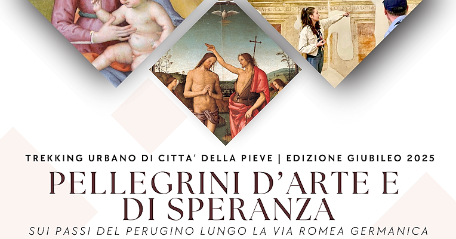

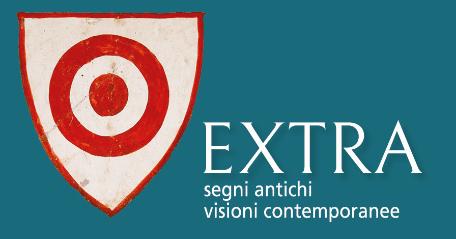
.jpg/ccb33cc7-ccc5-8b2b-1ed4-deda6003f4f3?width=456)
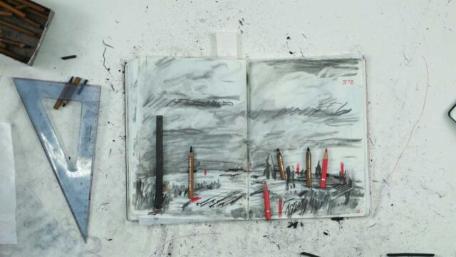

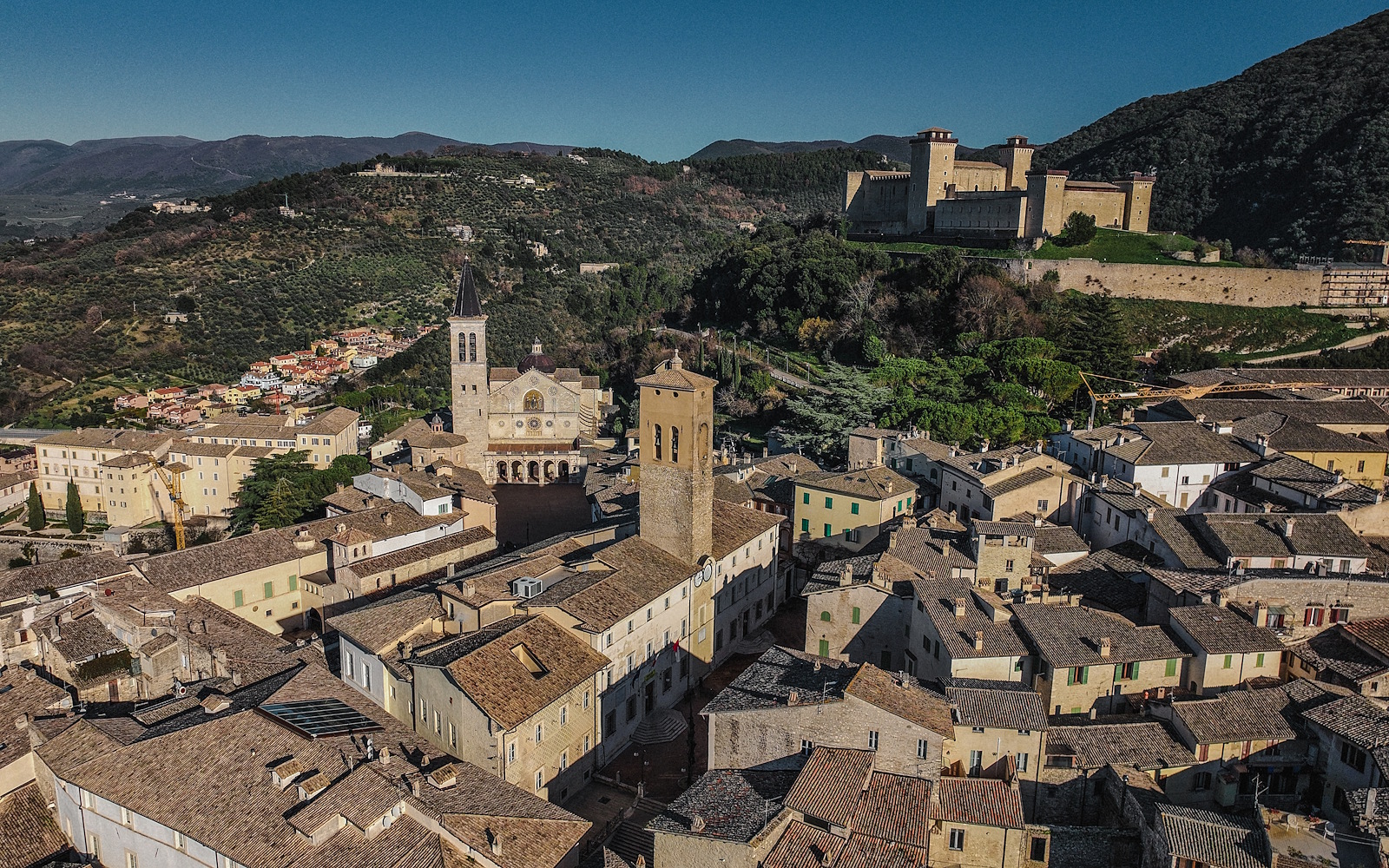
.jpg/9ae18678-841f-a782-a698-58e4bf904680?width=374)
.jpg/4ff5ba29-86e7-1188-eaac-1094d9fdde5f?width=374)
.jpg/ccb33cc7-ccc5-8b2b-1ed4-deda6003f4f3?width=374)

